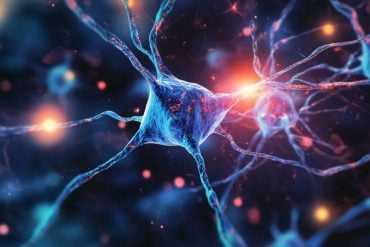Summary: KLS-13019, a novel CBD analog, shows promise at reversing pain sensitivity and preventing symptoms of neuropathy in mouse models of chemotherapy-induced peripheral neuropathy.
Source: Temple University Health System
For patients with chronic pain, ineffective treatments, lowered work productivity, and other factors often coalesce, fueling feelings of hopelessness and anxiety and setting the stage for even bigger problems, including substance use disorders.
In 2017 alone, some 18 million Americans misused prescription pain relievers over the course of the previous year. In many of these instances, patients suffering from chronic pain became addicted to prescription opioids.
In addition to being highly addictive, many studies suggest that prescription opioids do not effectively control pain over the long term, and hence researchers have been exploring various alternatives, including cannabidiol (CBD). CBD is a non-psychoactive substance derived from the Cannabis plant.
Studies have shown that while CBD reduces pain sensation in animals, its ability to do so in humans is limited by low bioavailability, the extent to which the drug successfully reaches its site of action. Now, new work by scientists at the Lewis Katz School of Medicine at Temple University suggests this obstacle may be overcome by a novel CBD analog known as KLS-13019.
“In a mouse model of chemotherapy-induced peripheral neuropathy (CIPN), we’ve been able to show for the first time that KLS-13019 works as well as, if not better than, CBD in preventing the development of neuropathy and reversing pain sensitivity after pain has been established,” said Sara Jane Ward, PhD, Assistant Professor of Pharmacology at the Katz School of Medicine and senior investigator on the new study.
The findings were published online April 6 in the British Journal of Pharmacology.
KLS-13019, developed by the Pennsylvania-based bio-pharmaceutical and phyto-medical company Neuropathix, Inc., is among the most promising neuroprotective CBD analogs currently under investigation. In previous work in cell models, it was found to be more potent than CBD, and studies in animals suggested it had improved bioavailability.
Encouraged by those initial studies, Dr. Ward and colleagues set out to better understand the pain-relieving capabilities of KLS-13019, relative to CBD, in animals with CIPN. CIPN is a common side effect of certain cancer treatments that damage peripheral nerves, which carry sensory information to the arms, legs, and brain.
The severe pain, or peripheral neuropathy, caused by CIPN manifests in different ways in human patients but frequently involves tingling or burning sensations and numbness, weakness, or discomfort in the limbs.
In a series of experiments designed to gauge animals’ pain responses, the researchers found that pain sensitivity was greatly reduced in animals with CIPN that were treated with KLS-13019 or CBD. KLS-13019 further reversed sensitivity to painful stimuli in animals in which peripheral neuropathy was already established, an effect that was not observed in CBD-treated animals.
Earlier studies have also hinted at the possibility that CBD is able to reduce opioid craving in patients with opioid use disorder.

“Many patients who use opioids for pain management enter a cycle of reinforcement, where each use of opioids triggers reward pathways and perceived pain relief, leading to addiction,” Dr. Ward explained.
While Dr. Ward and colleagues did not find evidence supporting a role for CBD in reducing opioid craving, they did observe significantly reduced opioid-seeking behavior in KLS-13019-treated animals.
“This tells us that KLS-13019 has benefits beyond its ability to alleviate pain,” Dr. Ward said.
The researchers suspect that while likely sharing a mechanism with CBD for pain relief, KLS-13019 may have an additional mechanism of action, one that breaks up the pathways reinforcing opioid use.
In future work, Dr. Ward and her team plan to explore the mechanisms by which KLS-13019 exerts its effects, particularly those underlying the drug’s ability to disrupt opioid-seeking behavior. They also plan to test the ability of KLS-13019 to alleviate other types of pain, beyond CIPN.
Other researchers who contributed to the study include Jeffery D. Foss, Daniel J. Farkas, and Lana M. Huynh, Center for Substance Abuse Research at the Katz School of Medicine, and William A. Kinney and Douglas E. Brenneman, Neuropathix, Inc., Pennsylvania Biotechnology Center, Doylestown, Pennsylvania.
Funding: The research was funded in part by National Institutes of Health grant R41 DA044898-01.
About this CBD and pain research news
Source: Temple University Health System
Contact: Press Office – Temple University Health System
Image: The image is in the public domain
Original Research: Closed access.
“Behavioral and pharmacological effects of cannabidiol (CBD) and the CBD analogue KLS‐13019 in mouse models of pain and reinforcement” by Jeffery D. Foss, Daniel J. Farkas, Lana M. Huynh, William A. Kinney, Douglas E. Brenneman, Sara Jane Ward. British Journal of Pharmacology
Abstract
Behavioral and pharmacological effects of cannabidiol (CBD) and the CBD analogue KLS‐13019 in mouse models of pain and reinforcement
Background and purpose
Cannabidiol (CBD) is a non‐euphorigenic component of Cannabis sativa which prevents the development of paclitaxel‐induced mechanical sensitivity in a mouse model of chemotherapy‐induced peripheral neuropathy (CIPN). We recently reported that the CBD structural analogue KLS‐13019 shows efficacy in an in vitro model of CIPN. The goal of the present study was to characterize the behavioral pharmacological effects of KLS‐13019 in comparison to CBD and morphine in mouse models of CIPN, nociceptive pain, and reinforcement.
Experimental approach
Prevention or reversal of paclitaxel‐induced mechanical sensitivity were assessed following IP or oral administration of CBD, KLS‐13019, or morphine. Antinociceptive activity using acetic acid‐induced stretching and hot plate, anti‐reinforcing effects on palatable food or morphine self‐administration, and binding to human opioid receptors were also determined.
Key results
Like CBD, IP or oral KLS‐13019 prevented the development of mechanical sensitivity associated with paclitaxel administration. In contrast to CBD, KLS‐13019 was also effective at reversing established mechanical sensitivity. KLS‐13019 significantly attenuated acetic acid‐induced stretching and produced modest effects in the hot plate assay. KLS‐13019 was also devoid of activity at μ, δ, or κ opioid receptors. Lastly, KLS‐13019, but not CBD, attenuated the reinforcing effects of palatable food or morphine.
Conclusion
KLS‐13019 shares CBD’s ability to prevent the development of CIPN, while KLS‐13019 uniquely attenuated established CIPN. Because KLS‐13019 binds to fewer biological targets, these findings can bring us closer to identifying molecular mechanisms shared by the two compounds as well as those unique to KLS‐13019. Lastly, KLS‐13019 may possess the ability to attenuate reinforced behavior, an effect not observed in the present study with CBD.






